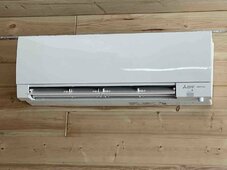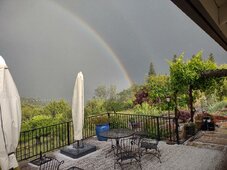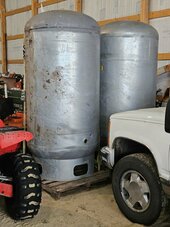Heated area is about 1500 square feet in Northern NH (if gets down to -20 F on occasion). 2x6 walls, double pane windows with double cellular blinds with side tracks on windows (an extra R 5). The tank usually gives me 24 hours, so I fire it once a day, but in cold conditions its twice a day. Total wood consumption is around 4 cords over a season. I use 1 ton mini split for shoulder seasons when overnight temps are over 25F. The house was built in 1987 as a modular and they definitely did not do advanced framing so lots of cold spots in the walls due to framing bridges. I did have an energy audit 10 years ago and with air sealing got the house down to point where I should have an air to air heat exchanger but do not so its tighter than most homes but nowhere near modern energy efficient buildings. To appreciably decrease the heat load I would need to strip the siding, build out the window casings and add 2 inches of foam on the outside, that would mitigate the cold spots, on the top and bottom header, window headers, corners and framing.
The big driver of storage tank thermal capacity is the type of heating emitters in the house. My house was setup for oil fired heat and has Slant FIn style hydronic radiators. Oil fired furnaces are usually set up to maintain a range of 160F to 180F and the radiator sizing is based on the same. The thermal performance of slant fin style radiators really drops off as the supply temps drop so if the tank drops below 140F, the amount of radiator surface area (length) is inadequate to heat the house on a cold day. My tank is vented American Solartechnics (great design but the owner has shut down the business and is selling it) with a PVC liner and its rated for 180F max. So I only have a differential of 40F of useful storage. At 8 pounds for a gallon multiplied by 40F delta that is 160K Btus storage. If I had radiant in the walls and ceilings, the supply temp using an injection mixer would be around 90F. 180F -90F = 90 delta so the same tank would have a capacity of 360 K. Note: due to stratification in the storage tank I actually have less capacity as 180F at the top of the tank may be 150F at the bottom. My tank is rough square. Horizontal cylindrical tanks will have even more impact due to stratification. Rectangular tanks take up far less room than cylindrical tanks but they still eat up some space. Folks with steel tanks may be able to tweak up to 200 F but they are flirting with boiling. I fire in the evening and the boiler is in the basement so I get a pretty good boost for several hours off the mass of the boiler and heat loss to the basement. The basement walls have 1" of foam outside but nothing in the floor so its is extracting some heat.
Most folks who have storage wish they had more with 1000 gallons being the sweet spot. Keep in mind that the storage needs to be matched to the boiler. My ancient Burham is rated at 100K btus/hr. For me to charge it up from 140F its going to take a couple of hours. My next system will probably use stainless steel IBC totes available on the surplus market, They can get up to 600 gallons and are rectangular with top manhole which would be good for installing a coil. I would buy two. I would just foam the exterior of the tank for insulation.






